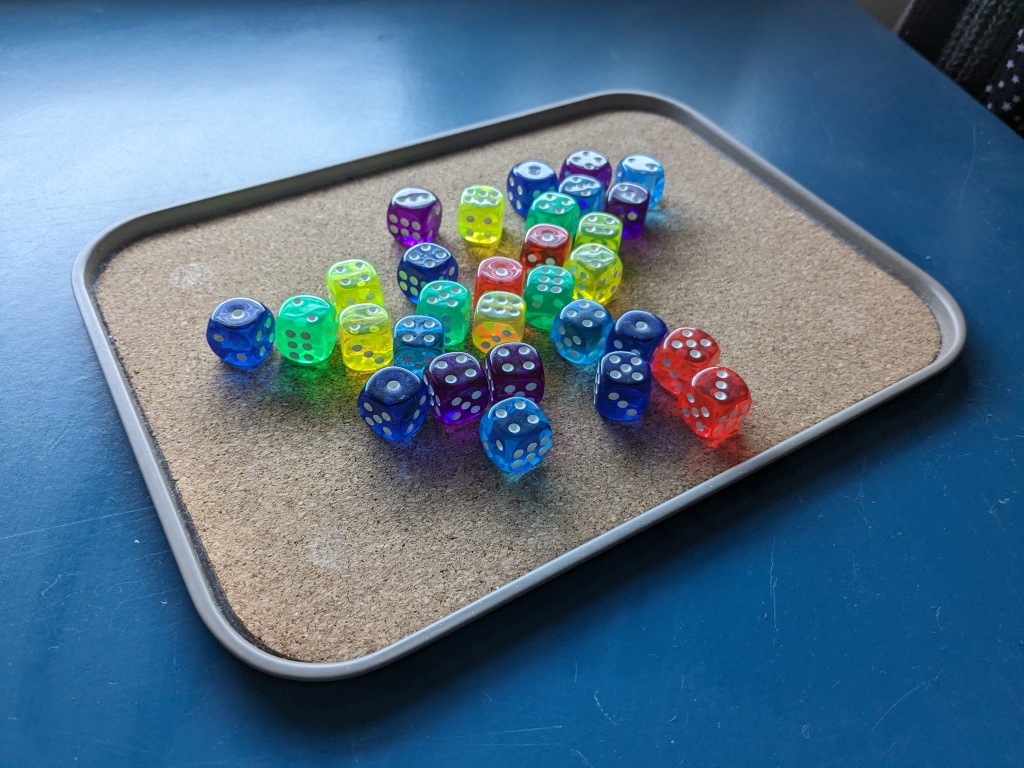A short post today, solving another eternal discussion. Doesn’t it feel good to know that no one will ever again discuss ways to randomly generate a Strength score?

3d6 down the line is classic and works well if all your stats are doing is providing modifiers for particular activities. Because the stats aren’t balanced in any meaningful way the “down the line” part is important if you don’t want all the group’s stat lines to end up looking very similar. Also it just helps the PCs feel like standard random weirdos off the street each with their own strengths and weaknesses.
In a slight tweak to rolling straight down the line, allowing players to swap one pair lets players who have a particular class in mind play the character they want, while still maintaining the random results across each PC and the group.
If your OSR game of choice has you rolling against the full stat value though (WhiteHack, TVG, The Black Hack), having a stat at either extreme can be unfun. Either because they are too safe or because their stat is so low there is no point in rolling. I bring it in a little by using 2d6+3 down the line. The 5-15 stat range keeps play more interesting.
There is another method though, which is both completely random *and also* completely balanced, ensuring that every PC has the same total stat value. best of all, it lets everyone roll a ridiculous number of dice all at once.
Start every stat at 5. Then roll thirty d6s on the following table:
| 1s | +1 Strength |
| 2s | +1 Dexterity |
| 3s | +1 Constitution |
| 4s | +1 Intelligence |
| 5s | +1 Wisdom |
| 6s | +1 Charisma |
Every PC gets a total of 60 points randomly distributed across their stats. You can let the players swap a pair after rolling as suggested above. Occasionally an unlikely roll will produce a stat over 15, in this case simply re-roll the dice for that stat.
I really like the 5 and 30d6 method. Thanks for that!
I had a problem with players objecting to “unplayable” characters. I addressed this by randomly generating hundreds of stat blocks. I only kept the blocks that summed greater than 70. I created six tables of 100 rows, one for each primary attribute. The lowest score in the primary of each table was 15. I explained and then asked players to choose a primary and roll percentile dice.
No one objected. Yes, all characters will stronger than average, but no one was god level and it had more variety than standard point distribution.
The 5 and 30d6 method sounds good, although the results tend be a little bland, with only a 22.3% chance of at least one stat at 12+, and a 2% chance of a 15+.
I think 3+2d6 in order (swap any two) gives pleasing results, although for a WotC era D&D 6+2d6 assign to taste probably works better.
There’s also old trusty Runequest’s 2d6+6 down the line
That’s a good option for modern D&Ds, and far simpler than “4d6, reroll 1s discard lowest” but it is too high for most old school RPGs.
I could imagine that some GMs wouldn’t enjoy characters with the potentially higher stats (anydice suggests a spread of 16, 14, 13, 12, 11, 10 – technically an inferior AD&D character), but as for old school.. Runequest came out in 1978, it’s as old school as it gets. 🙂
Oh what code did you use to get Anydice to give you the expected spread? I always figure that one out myself.
Didn’t RuneQuest only use 2d6+6 for Human Int and Size? I think the rest were 3d6.